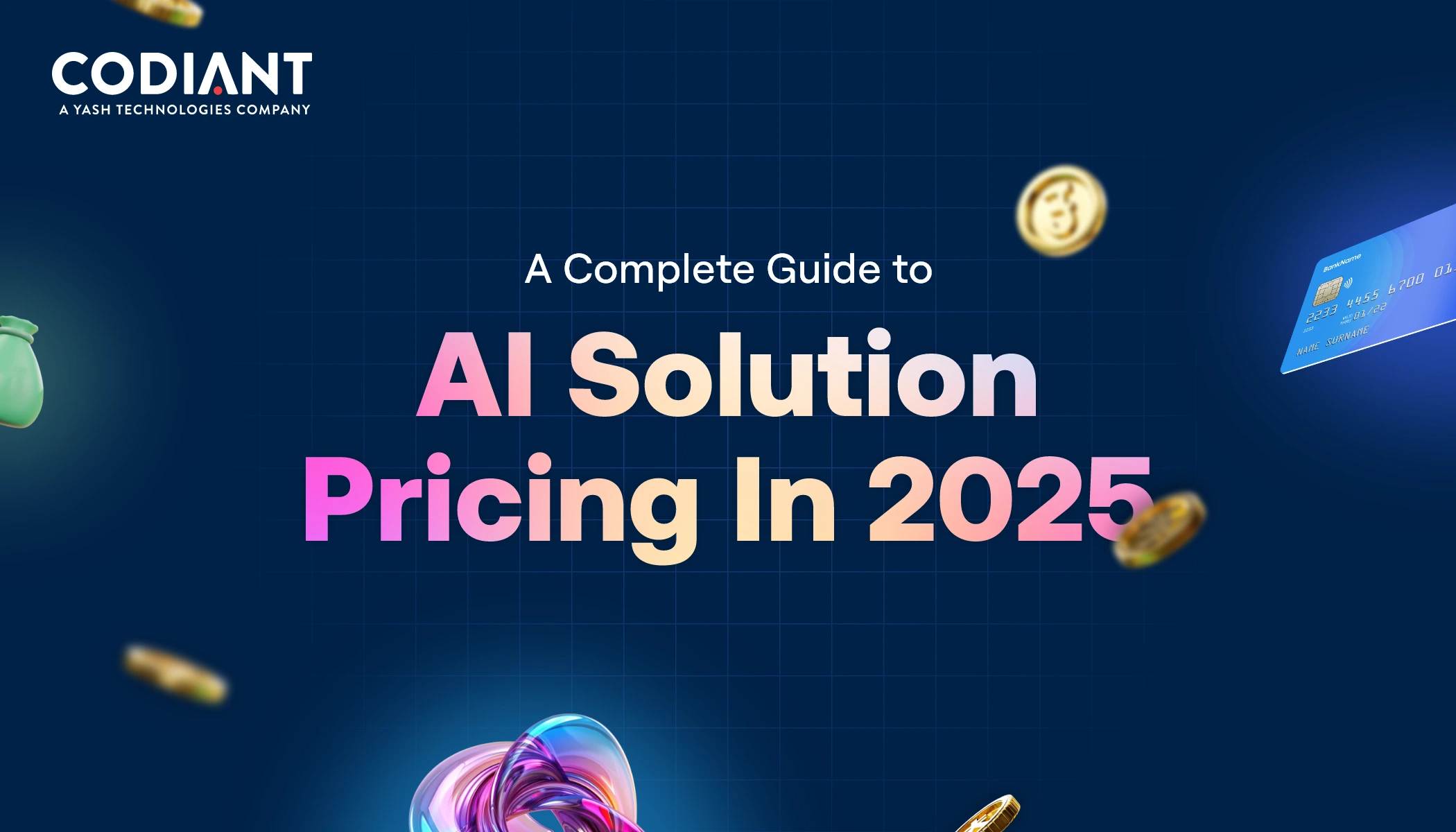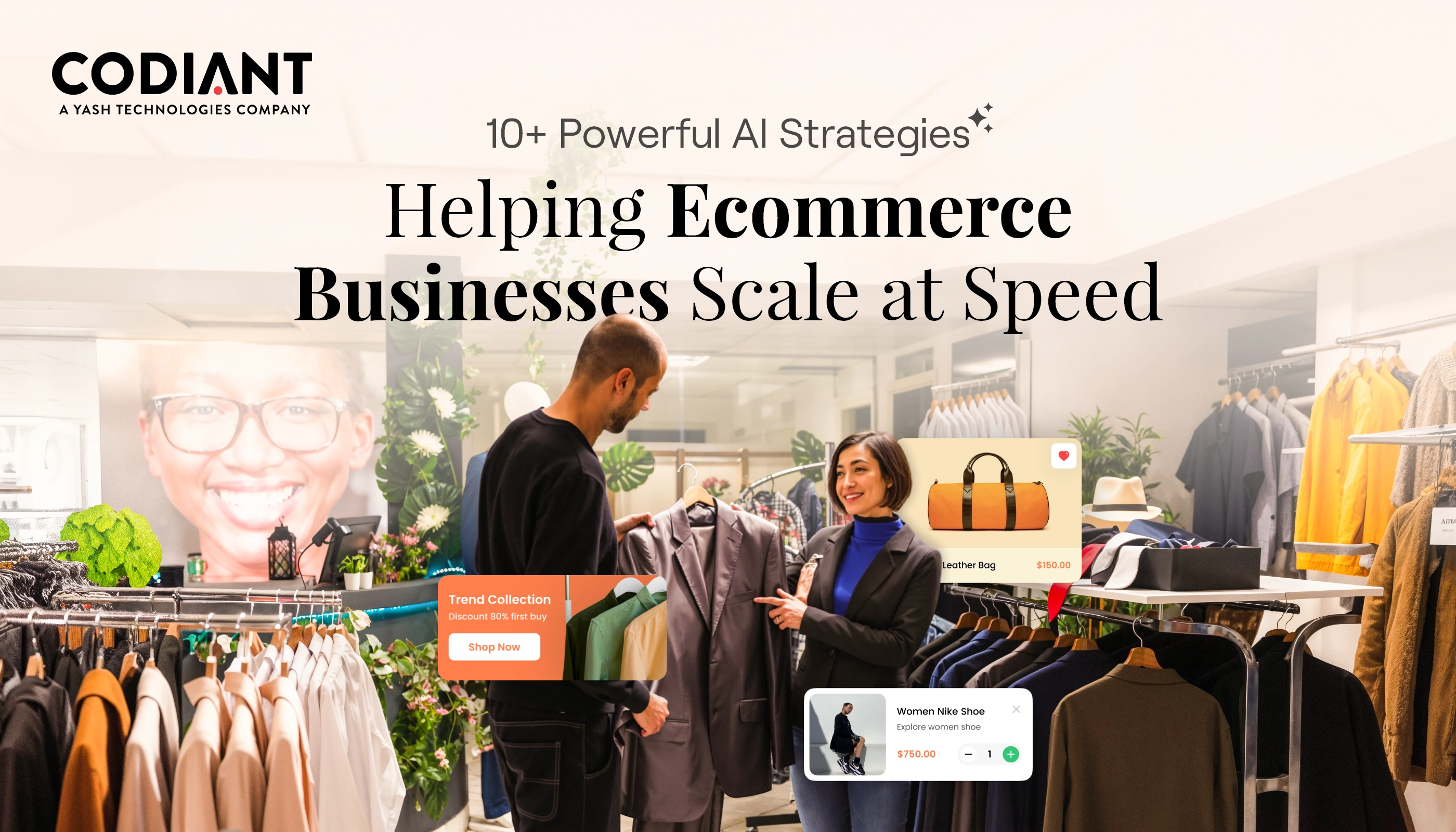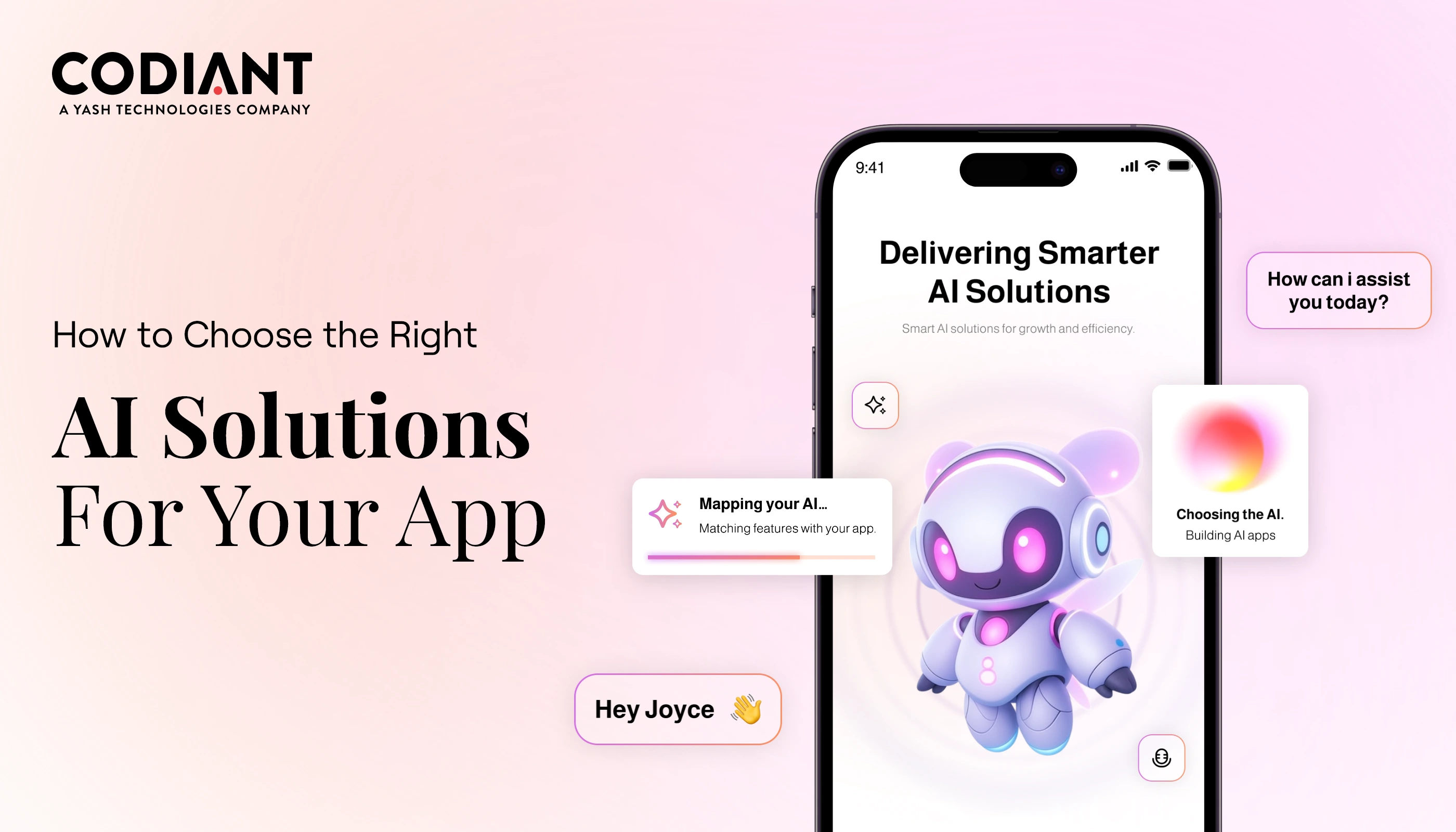How Much Does It Cost to Build an AI Solution in 2025?
Table of Contents
Subscribe To Our Newsletter

Back in 2011, Netflix quietly rolled out a small AI recommendation engine. It wasn’t flashy. It wasn’t publicized. But it worked—and within months, users were staying longer, watching more, and churning less.
Fast forward to 2025, and AI is no longer experimental. It’s a core part of how companies grow, save, and stay ahead. From Uber optimizing live routes to eCommerce brands predicting what customers want before they ask, AI has slipped into everyday workflows—powering decisions, automating tasks, and shaping how businesses operate.
And if you’re still wondering whether it’s worth investing in, consider this:
- The global AI market is set to hit $757B in 2025, and $3.6T by 2034.
- 97 million AI-related jobs are expected to emerge by the end of this year.
- Apple alone is investing $500B over four years into AI and related tech.
Naturally, more businesses are looking to build their own AI solutions. And the most common question we hear is:
“How much does AI cost?”
It’s a fair question—and one without a single answer.
The cost of AI today depends on your use case, the complexity of the solution, the data you have access to, and the outcomes you’re aiming for. Whether you’re building a simple chatbot or training a custom model on millions of data points, the AI development cost varies widely.
In this blog, we’ll break it all down—what goes into the cost, how pricing changes with scale, and how to plan your budget realistically. If you’re planning, budgeting, or even just exploring, this is the clarity you need before you take your first step.
What Businesses Need to Know About AI Development Costs in 2025
Let’s start with the most important piece: what exactly are you building?
Not all AI is created equal—and neither is its cost.
At one end, you’ve got rule-based systems—if-this-then-that logic that’s easy to build and cheap to maintain. On the other, you have complex AI setups: machine learning, computer vision, natural language processing, or even LLM-powered apps like GPT-based assistants. These require large datasets, training cycles, continuous testing, and more compute power.
And naturally, that shows in the budget.
Here’s how the range typically looks:
- Rule-Based Systems: Starting from $10,000 – best for predictable, low-variance workflows
- Custom ML Models or NLP Engines: Between $50,000 to $250,000 depending on complexity
- Generative AI or LLM-integrated Solutions: $250,000 to $500,000+ for enterprise-grade systems
The more intelligent and autonomous the system the higher the cost of building it – and the more value it can unlock when done right.
So before diving into development it’s important to define your use case clearly.
As a company offering custom AI solutions, we often advise clients to start with a lean build. Choose one high-impact use case, validate it and scale from there. That’s how you get the most out of your AI software development services budget – without burning time or money on unproven tech.
Key Factors That Influence AI Development Costs in 2025
AI doesn’t come with a flat price tag – and rightly so. Just like software products custom AI solutions vary wildly in complexity, scale and underlying tech. Whether you’re building a simple automation tool or an AI-driven platform that powers mission-critical decisions the cost depends on several key factors.
Let’s break them down.
-
Type of AI Solution
The first and most obvious cost driver is the kind of solution you’re building.
A rule-based system—think static if-then logic—is far cheaper than a full-blown machine learning model that improves over time. The moment you step into NLP, computer vision, or large language models (LLMs) like GPT or Claude, the complexity—and cost—rises fast.
For example:
- A basic rule-based chatbot might cost ~$10K
- A generative AI model for real-time content creation? Easily $300K–$500K+
This is where choosing the right Generative AI development services provider becomes critical. An experienced team can help you avoid over-engineering and focus on business value instead of just shiny tech.
-
Project Complexity and Scope
Not all AI products are built equal.
A simple AI chatbot development designed to answer support queries will cost significantly less than an enterprise-level AI system that predicts sales, automates reports, and integrates with multiple business tools.
Planning to launch fast? An MVP with just the core functionality can be budgeted and built lean. But if you’re eyeing long-term scale—multi-user support, integrations, versioned models—the AI app development cost increases proportionally.
Our advice: build for real-world use first. Scale once it proves value.
-
Data Requirements
AI is only as good as the data it’s trained on. And here’s where many underestimates the cost.
You’ll likely spend significant time and money on:
- Data collection (from internal systems or third-party sources)
- Data cleaning and labelling
- And choosing between open-source datasets vs. proprietary or custom data, which can be expensive.
For example, labelling data for a computer vision model (e.g., identifying objects in thousands of images) can cost anywhere between $5,000 to $50,000—just for annotations.
Partnering with the right AI software development services firm can help you navigate this efficiently without over-investing upfront.
-
Infrastructure and Tools
AI doesn’t just live in code—it runs on infrastructure. And this too affects your cost.
Choosing between cloud platforms (like AWS, GCP or Azure) and on-prem solutions impacts setup and operational expenses. Cloud is faster and scalable, but ongoing costs can add up – especially with token-based pricing models from providers like OpenAI or Anthropic.
You’ll also need the right tools:
- Frameworks like PyTorch, TensorFlow
- Ecosystem tools like LangChain, LlamaIndex or VectorDBs like Pinecone
Most AI app development services today offer full-stack suppor – infra, tooling, and MLOps – which can optimize costs if handled under one roof.
-
Developer Costs and Hiring Models
Last but not least: who’s building it?
Your AI development company structure has a major role in final pricing:
- In-house teams offer more control but come with long-term costs (recruiting, training, salaries)
- Outsourced teams offer flexibility and cost-efficiency especially across regions like Eastern Europe, India, or LATAM
- Freelancers are best for short-term niche projects but may lack reliability
On average:
- U.S. and Western Europe: $80–$150/hr
- Eastern Europe: $40–$70/hr
- India and Southeast Asia: $25–$50/hr
Whether you’re building from scratch or augmenting your team it’s worth investing time to hire AI developers with not just technical chops but also business context.
AI Development Cost Breakdown (2025)
Before jumping into budgets and timelines, many businesses ask the same fundamental question: how much does AI development cost in 2025? The answer depends on the kind of AI solution you’re planning to build. From simple chatbots to advanced computer vision platforms costs vary based on complexity, infrastructure and use case. Below is a breakdown of common AI application types – including AI chatbot development– to help you understand what to expect and how to plan your investment wisely.
| AI Solution Type | Estimated Cost Range (USD) | Complexity Level | Ideal Use Cases |
| Basic Rule-Based Chatbot | $10K – $25K | Low | Customer support, FAQs |
| AI Chatbot Development (NLP) | $25K – $70K | Medium | Conversational interfaces, smart virtual assistants |
| Computer Vision System | $50K – $150K | High | Image recognition, surveillance, visual search |
| Custom LLM Integration | $100K – $300K | Very High | AI co-pilots, document summarization, content gen |
| Enterprise-Level Predictive AI | $250K – $500K+ | Very High | Forecasting, automation, complex decisioning |
AI Development Cost Benchmarks (2025)
Before you set a budget it’s important to understand that not all AI projects cost the same. The AI app development cost in 2025 varies widely depending on the type of technology you’re using – whether it’s a simple rule-based system or a large language model powering real-time interaction. Any experienced AI development company will first evaluate your use case, data needs, and integration complexity before quoting a price. Here’s a quick breakdown of what different AI types typically cost and what drives those costs.
| AI Type | Estimated Cost Range (USD) | Common Use Cases | Cost Drivers |
| Rule-Based Systems | $10K+ | Basic chatbots, logic flows, rule engines | Low complexity, fixed logic, quick to deploy |
| ML / Deep Learning Models | $50K – $150K+ | Churn prediction, recommendation engines, fraud detection | Data training, model tuning, moderate infrastructure |
| LLM-Based Generative AI | $60K – $200K+ | Content writing tools, AI chat assistants, code generation | API integration, token usage, custom workflows |
| NLP Systems | $100K – $200K+ | AI translators, sentiment analysis, smart virtual assistants | Language diversity, large datasets, contextual understanding |
| Computer Vision | $100K – $300K+ | Facial recognition, OCR tools, quality inspection | High compute needs, image labelling, post-processing |
Pre-Built vs. Custom AI Solutions
When businesses begin exploring AI, one of the first decisions they face is: Should we use a ready-made AI tool or invest in building a custom solution?
The answer depends on your goals, scale and how critical AI is to your operations.
Pre-Built Tools
Platforms like TARS, IBM Watson and ChatGPT APIs offer fast and affordable ways to add AI capabilities to your product. They’re ideal for businesses testing the waters or solving narrow use cases like customer support or document summarization.
- Pros: Lower upfront costs, faster setup, minimal technical effort
- Cons: Limited flexibility, shared data environments, ongoing API costs
While they help reduce immediate spending, these tools often lack the depth and adaptability required for more complex or evolving business needs.
Read More: Which is Better for Your Business in 2025- Chatbots or Conversational AI?
Custom AI Development
On the other side, investing in custom AI solutions gives you complete control over the model, logic, data privacy and long-term performance. These solutions are built around your business logic, trained on your proprietary data and optimized for your specific use case.
- Pros: Full ownership, higher accuracy, better integration, and data security
- Cons: Higher initial investment, requires dedicated expertise
For companies aiming to build AI as a core business advantage – think advanced recommendation engines, predictive automation or internal co-pilots – custom AI development services deliver long-term value that pre-built platforms can’t match.
In-House vs. Outsourcing AI Development
One of the biggest decisions you will make when starting your AI project is who’s going to build it—your own team, or an outside partner.
Both options have their pros and cons. The right choice depends on your timelines, resources and how central AI is to your business strategy.
In-House Development
Building an internal team gives you full control over the process. You’re involved in every decision, from model architecture to deployment. If AI is going to be a core part of your product for the long run, this option may make sense.
Pros:
- Full control over development and data
- Easier communication and collaboration
- IP stays entirely within the company
Cons:
- Takes time to hire AI developers with the right skills
- Higher costs (salaries, training, infrastructure)
- Slower to get started, especially if AI isn’t your core strength
Outsourcing to an AI Development Company
Outsourcing AI development can help you move faster. You get access to ready talent, tools and proven development workflows – without needing to build everything from scratch.
Pros:
- Faster time-to-market
- Scalable team with broad expertise
- No long-term overhead or hiring delays
Cons:
- Less day-to-day visibility
- Requires clear documentation and communication
- IP protection and NDA agreements are crucial
Cost Comparison
- Hiring an in-house team can cost $300K–$500K+ per year (salaries, benefits, infrastructure)
- Partnering with an external agency may range from $50K–$250K per project depending on scope and duration
If speed, flexibility and cost-efficiency matter, most companies choose to hire AI developers through a trusted agency – at least for the MVP or early stages.
Tips to Optimize AI Development Costs
Building AI doesn’t have to drain your entire tech budget. With the right approach you can save time, reduce costs and still deliver a powerful solution that works.
Here are some practical tips to help you keep your AI development cost-efficient – without cutting corners on quality.
-
Use Pre-Trained Models and Open-Source Tools
You don’t always need to start from zero. Many open-source models (like BERT, YOLO and LLaMA) are already trained on massive datasets and ready to fine-tune. Pre-trained models save both time and compute costs – especially for common tasks like text classification or object detection.
If you’re just exploring AI business ideas this is the fastest and most affordable way to build a working prototype.
-
Start with an MVP
Don’t aim for perfection on day one. Build a Minimum Viable Product (MVP) with just the core AI functionality. This lets you test your idea, get feedback and see early results without over-investing.
Many AI app development company follow this approach to help businesses validate ROI before scaling further.
-
Use Cloud Services Wisely
Platforms like AWS, Google Cloud and Azure offer flexible pricing, powerful tools, and pay-as-you-go models. But if you’re not careful cloud costs can add up fast. Always monitor usage, use reserved instances if needed and choose regions wisely to avoid unnecessary spend.
-
Outsource Non-Core Components
Not every piece of the puzzle needs to be built in-house. For things like data labelling frontend UI or API integrations, consider outsourcing. This lets your internal team focus on what matters most – while speeding up delivery and reducing development overhead.
-
Leverage AutoML Tools
If your team is not full of machine learning experts, tools like Google AutoML, DataRobot or Azure ML Studio can help. These platforms simplify training, tuning, and deploying models – automating the hard stuff and reducing the need for deep AI expertise.
Smart choices early on can make a huge difference in how much you spend—and how quickly you see results. Think lean, validate fast and invest more once you know the AI is delivering value.
ROI Considerations for AI Investment
Before investing in any AI project, one essential question must be answered: Will it deliver enough value to justify the cost?
Whether you’re improving operations or launching a customer-facing feature, understanding the return on investment is just as important as knowing the cost of AI development. AI can be a powerful growth driver—but only if it’s tied to measurable outcomes.
How to Measure ROI in AI Projects
Start by identifying the problem you’re solving and estimating how AI will improve it. For instance, how many hours will it save? How much human error can it reduce?
Could it create new revenue streams? A financial AI tool that detects fraudulent transactions in real time could save banks millions each year.
Similarly, a predictive maintenance system used in manufacturing could prevent unexpected downtime, saving thousands in repair and production delays. When built intentionally, the results of AI speak clearly.
That’s why every reliable AI application development company begins with a feasibility analysis and ROI forecast—before writing a single line of code.
Use Cost-to-Benefit Frameworks
To evaluate ROI, you can apply a simple framework: compare what you’re spending versus what you expect to gain.
The cost includes everything—development, infrastructure, integrations, and ongoing maintenance.
The benefit includes things like reduced labour hours, improved efficiency, increased conversions, and even reduced risk. If the projected returns outweigh the upfront investment within a reasonable time frame—usually 6 to 12 months—then the case for AI becomes a lot stronger. This kind of modelling is crucial, especially if you’re building AI applications with a long-term view.
Think Long-Term
Too often, businesses focus only on short-term spend. But AI should be viewed as a strategic asset—not just a tool. It gets better with time, adapts to new data, and can scale with your business. Investing wisely in AI now can create compounding benefits later.
Whether you’re adding intelligence to a product or streamlining internal workflows, working with the right AI application development company ensures you’re not just building tech—you’re building competitive advantage.
Final Cost Estimates and Examples (2025)
By now, you’ve seen how many factors influence the final cost of building an AI solution—use case, data, tools, and the team behind it. But to make things more concrete, here are a few realistic cost estimates for different types of AI applications in 2025.
If you’re wondering how much does AI cost, these examples should give you a useful benchmark.
Startup AI Chatbot MVP: $15K–$40K
If you’re launching a simple AI chatbot as part of your MVP, expect to spend between $15,000 and $40,000. This includes using pre-trained NLP models, basic integrations, and a clean user interface. It’s a solid starting point for start-ups testing AI in a single function like support or onboarding.
NLP-Based Customer Support System: $100K+
For companies building a more advanced AI support system—one that understands context, handles multi-step queries, and integrates with CRMs—the cost goes up. These systems require large datasets, training, testing, and refinements. With the right AI development services in Australia, this investment can pay off fast by reducing manual support workload and improving customer response time.
Enterprise-Level LLM SaaS Product: $200K+
If you’re building a full-fledged SaaS product powered by large language models (LLMs) like GPT or Claude, expect to invest at least $200,000. These apps often include custom prompt tuning, multiple user roles, real-time responses, usage-based pricing models, and integrations with other enterprise tools. It’s a serious investment—but one that delivers massive scale and automation.
These numbers aren’t one-size-fits-all. But they’ll give you a grounded sense of what to expect when planning your AI budget. The best way to get a precise estimate is to partner with an AI development services provider who understands your goals and can tailor the solution around them.
Conclusion
AI can transform how your business operates—but only if you approach it with the right plan and budget. From simple chatbots to advanced enterprise tools, the cost of AI development varies widely. What matters is building what you actually need, not what sounds impressive. Start with a clear goal, choose the right tech stack, and work with experts who understand both your industry and the technology. A trusted AI application development company in the USA can help you scope smarter, build leaner, and scale faster. Before locking in numbers, get expert guidance—it could save you both time and money in the long run.
Frequently Asked Questions
Yes, start-ups can begin with affordable AI tools or MVPs. Using pre-trained models and outsourcing to experts helps keep costs low while still solving real problems effectively.
The global AI market is projected to hit $757.58 billion in 2025, showing rapid growth across industries like healthcare, finance, logistics, and retail.
AI will become more embedded in everyday tools—powering automation, personalization, and decision-making. Job demand in AI will also grow, reaching around 97 million AI-related roles.
AI is expected to run deeply through most industries—handling decisions, automation, and customer interactions—with more regulation, better ethics, and stronger human-AI collaboration.
Outsource for speed and flexibility. Go in-house if AI is your product’s core. Many businesses start with agencies, then build internal teams once the product scales.
It depends on complexity. A basic MVP might take 4–8 weeks, while advanced AI systems can take 4–6 months or more, including data preparation and testing.
Featured Blogs
Read our thoughts and insights on the latest tech and business trends
How AI Helps eCommerce Businesses Scale Faster: 10+ Proven Strategies
- December 4, 2025
- Artificial Intelligence E-commerce
Running an eCommerce business today means managing more products, more customers, and more data than most teams can handle manually. As order volumes rise, tasks like customer support, inventory planning, product discovery, and marketing start... Read more
How to Choose the Right AI Solutions for Your Existing App
- December 1, 2025
- Artificial Intelligence
Businesses today are under pressure to move faster, deliver personalized experiences, and operate with greater accuracy. This is why many enterprises and startups are now looking for ways to add AI features to their mobile... Read more
How to Enable AI for Smart Diet Planning and Client Progress Tracking
- November 26, 2025
- Artificial Intelligence
Smart diet planning and consistent progress tracking have become essential in a world where people want faster, more accurate ways to manage their health. Traditional methods like manual calorie counting or generic meal charts often... Read more





